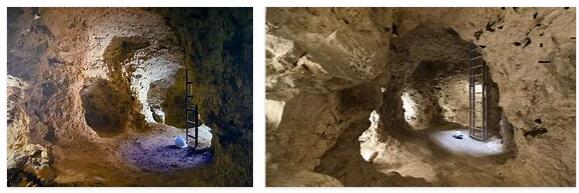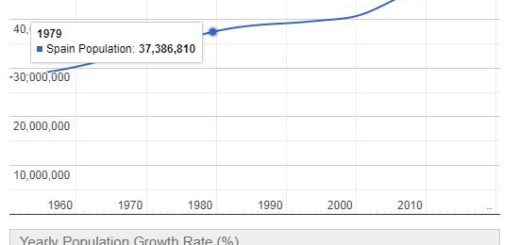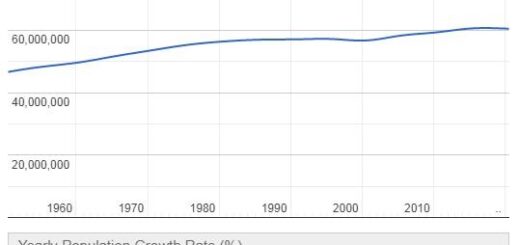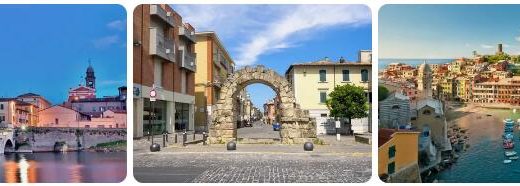Sammallahdenmäki Cemetery (World Heritage)
The cairn tombs of Sammallahdenmäki are remnants of the Scandinavian Bronze Age and a testimony to the religious and cultural ideas of the cultures of that time.
Sammallahdenmäki Cemetery: Facts
| Official title: | Sammallahdenmäki cemetery with graves from the Bronze Age |
| Cultural monument: | of the more than 3000 known in Finland, 33 completely preserved Bronze Age grave sites made of granite stones |
| Continent: | Europe |
| Country: | Finland |
| Location: | near Lappi, southeast of Rauma |
| Appointment: | 1999 |
| Meaning: | an outstanding example of Bronze Age burial forms in Scandinavia |
Sammallahdenmäki Cemetery: History
| 1500-500 BC Chr. | Bronze Age in Scandinavia |
| 1878 | first mention of 17 barrows on Saarnijärvi |
| 1891 | Excavation of four graves in the parish of Lappi |
| 1961 | Re-examination of the graves mentioned for the first time in 1891 and discovery of a further 9 graves |
| 1990 | renewed investigation of the area and now registration of 33 graves |
| 2003 and 2004 | During further excavations near the graves, Bronze Age dwellings were also found |
Historic milestones in the north
Like no other place in the north, this “place of death” documents burial and mourning rituals of a Bronze Age society. The graves made of granite stones also tell of social and religious structures that were found in northern Europe more than three millennia ago. Similar burial sites from the Bronze Age can be found on the Finnish coasts of the Gulf of Bothnia, on the Åland Islands and on Swedish soil in Ångermanland, Uppland or Medelpad – albeit only in small formations and in their original construction by a long way not preserved. Sammallahdenmäki, on the other hand, is the largest Bronze Age site of its kind and – what a fortunate circumstance – it has remained almost unchanged to this day.
The “grave structures” erected here were evidently monumental in size, as archaeological studies have shown and the viewer can still guess today. This prehistoric place of worship – based on the knowledge of the importance of the place of discovery, placed under protection by law by the state, especially if the area belongs to private owners – also includes neighboring fields, meadows and private forest areas. The fact that there was not only a prehistoric cemetery from the Bronze Age testify to the fact that gravestones, which also served as boundary marks and sea markers, were partly erected according to a fixed grid on elevated, clearly visible areas of the cliff-rich coastal landscape. Such systems made of granite were therefore created at elevated points, Because the local sun worshipers were looking for the best view of the moving sun and a clear view of the sea was required, uninvited intruders were always expected from the sea. The burial site was almost free of trees, and even today only a few pines thrive here. This apparently deliberately chosen place seemed extremely suitable for the people of the Bronze Age to come together for ritual acts of worship.
Apparently Sammallahdenmäki was the important spiritual center of his time, from which the worship of the sun is said to have spread to the Finnish hinterland. It is also assumed that this center – visible from afar for friends and foe alike – also served as a demonstration of power and influence by a land-owning clan or an association of rich landowning families.
The graves on the high cliffs of Lake Saarni were first mentioned in the catalog of prehistoric sites of the Ulvila district in the second half of the 19th century, and in the last decade of that century, further archaeological surveys found further prehistoric graves in the vicinity of Lappi. According to eningbo, the grave shapes of the best preserved Bronze Age burial ground in Finland range from flat, narrow small graves to large, hill-like graves to those with round, wall-like stone frames.
A particularly unusual shape of the grave is the very flat, square, slightly asymmetrical “stone setting” called “Kirkonlaattia”, “church floor”. While the stone layers are getting thinner and thinner towards the center of the square, which resembles a floor, they are up to half a meter high on the outer edge. Even after the excavations, it is not yet known whether a grave has been opened or whether it is a place of unknown sacred significance. Another special feature is »Huilun pitkä raunio«, the so-called »Long Ruin of Huilu« – a huge, elongated »oval building« with wall-like boundaries, the shape of which is the result of multiple extensions. In the “Long Ruin of Huilu” – a type of which only two have been found in all of Finland – no bones were stored,
Sammallahdenmäki is one of the most impressive grave monuments from the Bronze Age, the discovery of which represents a historical milestone for the education about the life of our great-great-great-ancestors.



